Exploring Bluetooth Mouse Drivers for Windows 10


Intro
In the world of computing, the relationship between hardware and software forms the backbone of user experience. Particularly, the Bluetooth mouse serves as an essential tool for many tech aficionados, enabling smooth navigation and enhanced control. However, one often overlooked aspect of this interaction is the role of Bluetooth mouse drivers within the Windows 10 operating system. Understanding these drivers is critical, as they hold the key to unlocking the full potential of your wireless peripherals.
When you plug in or pair your Bluetooth mouse with your computer, the operating system relies on drivers to facilitate communication between the two devices. If these drivers are not properly installed or functioning, the performance could be lackluster, leading to issues like lag or disconnection. Given the popularity of Bluetooth mice among tech-savvy users, the significance of these drivers cannot be understated.
As we navigate this article, we will unpack several key topics, including installation protocols, troubleshooting tips, and compatibility concerns. By weaving together this information, we aim to empower users with practical knowledge that enhances their computing endeavors.
Preamble to Bluetooth Technology
In an age where connectivity defines our digital engagement, understanding Bluetooth technology becomes essential, especially when discussing wireless devices like mice. This section sets the stage for comprehending how Bluetooth operates, what makes it indispensable in our tech toolkit, and why grasping its nuances can enhance your user experience.
Defining Bluetooth
Bluetooth is a short-range wireless technology designed for data exchange over short distances. It connects devices without the need for cumbersome cables, making it a favorite among tech-savvy individuals and everyday users alike. At its core, Bluetooth provides the foundation for seamless communication among devices—think of connecting your Bluetooth mouse to your computer, or effortlessly streaming music from your phone to your car stereo.
Bluetooth operates in the 2.4 GHz band, which is common among various devices. This frequency range allows for low-energy communication and helps in reducing interference. Importantly, Bluetooth is designed to be power efficient, which is crucial for devices like wireless mice that operate on batteries. A well-established Bluetooth connection can support multiple devices simultaneously, thus enhancing convenience in everyday usage.
How Bluetooth Works
Understanding how Bluetooth works can provide insight into its capabilities and limitations. The process initiates with device discovery. When a Bluetooth-enabled device is turned on, it searches for other nearby Bluetooth devices. This is often accompanied by a notification prompting user interaction—this could require confirming a code or simply clicking a pairing option.
Once paired, devices communicate using a series of protocols that define how data is transmitted. Bluetooth employs a master-slave architecture during a connection. The master device (your computer, for instance) controls the connection, while the slave device (the mouse) responds to commands from the master. This interaction allows for effective data transfer with minimal latency.
The range typically stretches to about 30 feet, depending on environmental factors like walls or other obstacles, but in an ideal setting, devices can communicate effectively even at maximum distance.
Imagine lying on your couch, comfortably using a Bluetooth mouse to navigate your laptop across the room. This flexibility exemplifies how Bluetooth can impact our daily interaction with technology.
"Bluetooth technology has become a staple in our toolkit, connecting our devices with ease and allowing for a freedom of movement that's invaluable in our fast-paced lives."
For all its advantages, however, Bluetooth comes with considerations. Security is a key point; as devices exchange information wirelessly, it’s vital to ensure they’re secure from potential vulnerabilities. Users should always verify connections and manage paired devices diligently to safeguard their information.
In summary, grasping the fundamentals of Bluetooth technology is not just a nerdy pursuit. It’s an essential part of utilizing modern, wireless devices effectively. Being well-versed in this area will enhance not just your understanding of Bluetooth mouse drivers, but your entire user experience.
Overview of Bluetooth Mouse Functionality
When it comes to a functional workspace, the mouse plays an understated yet pivotal role. Among its many varieties, the Bluetooth mouse stands out due to its wireless convenience and flexibility. Understanding its functionality not only demystifies the technology but also underscores the significant advantages it offers over traditional wired alternatives.
What is a Bluetooth Mouse?
A Bluetooth mouse is a type of pointing device that communicates wirelessly with computers, tablets, or any compatible devices using Bluetooth technology. Unlike its wired cousins, it operates without the hassles of tangled cords, giving users a more uncluttered and mobile workspace. This might sound straightforward, but the significance is profound—no cords means enhanced flexibility and ease of use, especially in diverse environments.
For instance, think about professionals working in variable settings—coffee shops or shared workspaces. They can easily connect their Bluetooth mouse to their laptops without needing to find an electrical outlet. Moreover, Bluetooth mice often integrate seamlessly with multiple devices, meaning that you can switch between your tablet and laptop with a simple click, freeing you from the constraints of conventional wired mice. The simplicity of a Bluetooth mouse provides convenience that aligns with modern work habits.
Comparison with Wired Mice
While Bluetooth mice boast remarkable benefits, a side-by-side examination with wired mice reveals a more nuanced discussion.
- Mobility: Bluetooth mice shine in mobility. They avoid the limitations posed by cables, granting users the ability to navigate their screens from a distance. On a contrast, wired mice are tethered, offering no room for such liberty.
- Lag and Performance: Wired mice usually make up for their physical limit by ensuring a consistent connection. They typically experience less latency compared to Bluetooth devices. This can be crucial for avid gamers or professionals requiring precision; however, advances in Bluetooth technology are closing this gap considerably.
- Battery Dependence: Bluetooth mice are powered by batteries, which means regular charging or replacement is a consideration. Wired mice, conversely, draw power directly from the USB port, offering an uninterrupted experience.
In summary, choosing between a Bluetooth mouse and a wired one depends largely on personal needs and preferences. While a Bluetooth mouse offers unrestrained mobility and flexibility, it requires mindful consideration regarding power management and potential lag in performance. Users must weigh these factors to determine the best fit for their workflows and gaming preferences.
"Ultimately, it comes down to balancing your specific needs with what each type of mouse offers."
In this techno-accelerated world, it’s essential to note that wireless mice are continuously evolving to integrate the high-speed performance once reserved for their wired kin. A thoughtful discussion around Bluetooth mouse functionality can foster smarter choices in equipment, ultimately making your computing experience a whole lot smoother.
The Role of Drivers in Device Performance
In the realm of computer peripherals, especially when it comes to Bluetooth devices, the conversation often steers towards drivers. They are anything but trivial. Imagine trying to communicate with someone who speaks a different language; that’s what it’s like when a device doesn’t have the right driver installed. The role of drivers is pivotal, serving as the bridge between the operating system and the hardware. Without that connection, even the most sophisticated mouse is reduced to just a piece of plastic.
What are Device Drivers?
A device driver is essentially a piece of software that tells the operating system how to communicate with a piece of hardware. Think of it as a translator; it converts the OS’s general commands into a language that the hardware can understand. This means, when you move your Bluetooth mouse, the driver ensures that the operating system is aware of that movement, translating it into cursor movement on the display. Drivers come in various forms, but for our focus, Bluetooth drivers are specifically crafted to facilitate the wireless connectivity that Bluetooth mice rely on.
It’s worth noting that drivers don’t just stop at translation. They manage the settings and performance of the devices. Whether it's adjusting sensitivity or enabling battery-saving modes, drivers play a key role in optimizing device behavior.
Importance of Bluetooth Drivers
Now, if you’re wondering why Bluetooth drivers deserve special attention, here’s the crux: compatibility and performance. As technology marches forward, both the operating systems, like Windows 10, and the hardware undergo upgrades. A driver that worked perfectly with an older version of Windows may fail to engage smoothly with the latest edition. This could lead to connectivity issues or even malfunctioning devices.
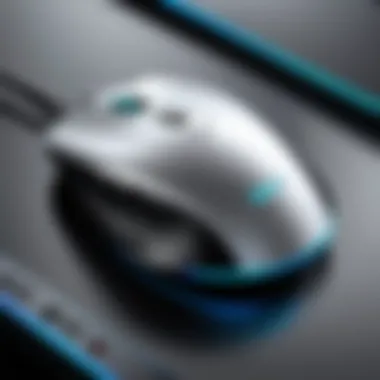
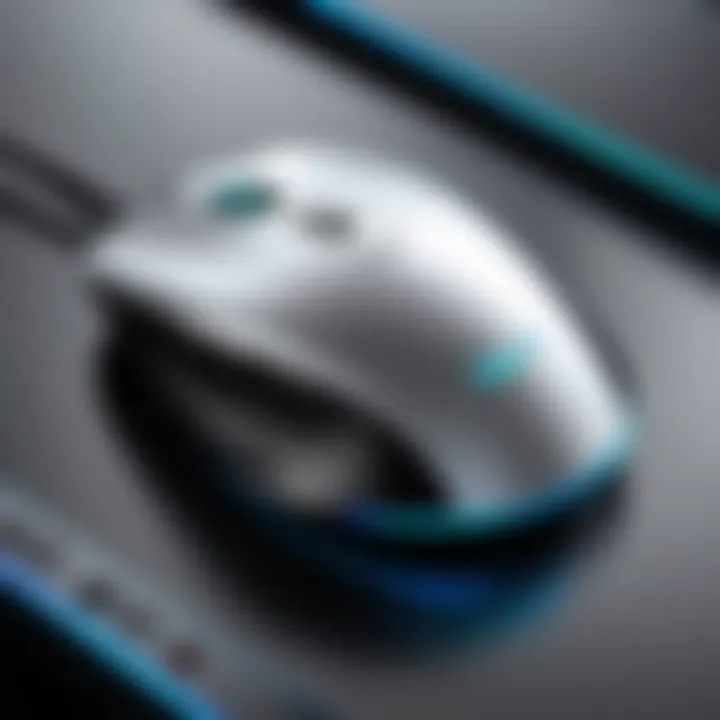
Furthermore, Bluetooth drivers ensure that all the features of a device are functional. For instance, many modern Bluetooth mice come equipped with adjustable DPI settings—a feature that can only be utilized with the right driver installed. In simpler terms, without a proper driver, you’re not getting the full bang for your buck.
Additionally, the efficiency of these drivers can significantly affect battery life. A well-optimized driver can reduce energy consumption while maintaining performance, leading to longer usage time between charges.
"Keeping your Bluetooth drivers up-to-date is as crucial as maintaining a good car. A well-oiled machine works better and lasts longer."
So, it’s clear that Bluetooth drivers are essential in ensuring not just functionality but also enhancing performance. They dictate how well devices integrate into the overall system and perform under various circumstances. Ultimately, understanding this role can empower users to make informed decisions, especially when it comes to troubleshooting and maintaining their Bluetooth mice. Knowing that a minor driver issue could spell the difference between seamless operations and frustrating interruptions is key for anyone serious about their tech gear.
Installing Bluetooth Mouse Drivers on Windows
In today's increasingly wireless world, proper installation of Bluetooth mouse drivers is a fundamental step for ensuring your devices communicate effectively with Windows 10. A Bluetooth mouse isn't just a convenient tool; it's an extension of your computing experience. Without the right driver software, you might as well be working with a paperweight instead of a sleek, modern device. This section dives into the crucial aspects of installing these drivers, helping you navigate the maze of options available to you.
Methods for Installation
When it comes to installing Bluetooth mouse drivers, two primary methods stand out: automatic installation through Windows Update and manual installation via the manufacturer's website. Each method carries its own advantages and considerations, making them worth exploring.
Automatic Installation Through Windows Update
Automatic installation through Windows Update is often the first line of defense for many users when setting up new hardware. This method simplifies the process, allowing Windows to find and install the drivers needed for your Bluetooth mouse. One key characteristic of this method is its convenience. With just a few clicks, you can enable Windows to search for the latest driver updates online.
This option is popular for several reasons:
- Ease of Use: Most users prefer methods that require minimal technical know-how. With Automatic Installation, the computer does most of the work for you.
- Timeliness: Using Windows Update often ensures that you’re receiving the most up-to-date drivers, which helps in optimal performance.
However, there are certain unique features and drawbacks to consider. Windows Update primarily focuses on generic drivers, which may not fully unlock the capabilities of your Bluetooth mouse. This can lead to underwhelming performance in some cases. Thus, while it’s a beneficial choice for most, it’s good to remain aware of its limitations.
Manual Installation via Manufacturer's Website
In contrast, manual installation via the manufacturer’s website offers a more tailored experience when dealing with Bluetooth mouse drivers. This method involves visiting the website of the mouse's maker, downloading the driver specific to your device, and then installing it yourself. The appealing aspect here is that the manufacturer often provides specialized drivers tailored for their hardware.
Reasons for opting for this method include:
- Precision: Directly using drivers designed specifically for your device ensures compatibility and access to advanced features that the generic drivers might miss.
- Support: If you encounter issues, the manufacturer's website often provides troubleshooting resources tailored for their specific products.
However, manual installation comes with some disadvantages as well. For example:
- Complexity: This method can be daunting for those lacking tech-savvy skills. Users need to know not just where to find the drivers, but also how to install them.
- Time-Consuming: Searching for the correct driver can take time, especially if you’re unsure of your product specifications.
Step-by-Step Installation Process
Once you've decided which installation method suits you best, the next step is executing the installation itself. Whether you're using Windows Update or opting for manual installation, the process can generally be broken down into straightforward steps. Here’s how:
- Open Settings: Click the Start menu, then hit the gear icon to access your Settings.
- Navigate to Devices: In the Settings window, select "Devices" to enter the Bluetooth settings.
- Choose Bluetooth & Other Devices: In this menu, you can see if your Bluetooth is switched on. If not, toggle it on.
- Add Bluetooth or Other Device: Click "Add Bluetooth or other device," then select your mouse from the list.
- Automatic Driver Download (if selected): If you choose to use Windows Update, the driver will automatically download. You can check the process in the update settings.
- Manual Installation (if selected): Download the driver from the manufacturer's website and run the installer.
- Restart Your Device: After installation, a system restart could be required to ensure changes take effect.
By following these steps, users can install Bluetooth mouse drivers easily, leading to improved mouse performance and user satisfaction. From rich features to timely updates, understanding how to handle this element of your hardware setup opens up doors to a better computing experience.
Troubleshooting Bluetooth Mouse Driver Issues
Troubleshooting Bluetooth mouse driver issues is a vital aspect of maintaining an optimal user experience on Windows 10. This section provides a foundational understanding of the hurdles users may encounter with Bluetooth mouse functionality. Resolving these issues not only enhances device performance but also improves overall productivity. Problems with drivers can lead to a host of inconveniences, such as lagging response or even complete device failure. Identifying and fixing these issues can save time and frustration.
Common Driver-Related Issues
Driver-related issues can be a real thorn in the side when trying to use a Bluetooth mouse effectively. Various problems may arise, the most common being incompatibility and driver corruption.
Incompatibility Problems
Incompatibility problems are often a major contributor to Bluetooth mouse interruptions. These issues typically occur when a Bluetooth mouse is paired with a system that doesn’t support the necessary driver specifications. For example, newer mouse models may require updates or specific drivers that older versions of Windows 10 do not provide.
The key characteristic of these incompatibility issues lies in the mouse and system communication breakdown. This can be particularly frustrating for users who may not be aware that their devices could work together if only the right drivers were installed.
- Unique Feature: Incompatibility problems can manifest as unresponsive clicks or erratic pointer movements, contributing significantly to user dissatisfaction.
- Advantages/Disadvantages: Understanding this issue helps users appreciate the importance of checking or updating driver compatibility prior to installation. On the downside, it might lead to added hassle when the required drivers aren’t readily available, potentially leaving the user in a pinch.
Driver Corruption
Driver corruption is another serious issue that can prevail in the realm of Bluetooth mouse drivers. Corrupted drivers can result from several factors including improper installation, unexpected power failures, or even malware interference. When a driver is compromised, it often fails to execute commands correctly, leading to erratic behavior from the Bluetooth mouse.
A key characteristic of this problem is the unpredictability associated with driver performance. For instance, a mouse may function perfectly one minute and then completely freeze the next without an apparent reason.
- Unique Feature: Unlike incompatibility, which is often straightforward to diagnose, corrupted drivers can create a more complex web of performance issues that may require extensive troubleshooting.
- Advantages/Disadvantages: Detecting driver corruption can lead to quick resolutions once identified, but the process of identifying these issues poses a challenge, especially for non-tech-savvy users.
Diagnosing Connection Issues
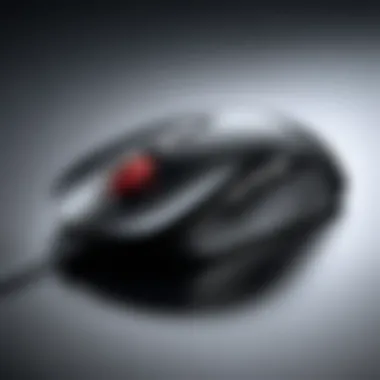
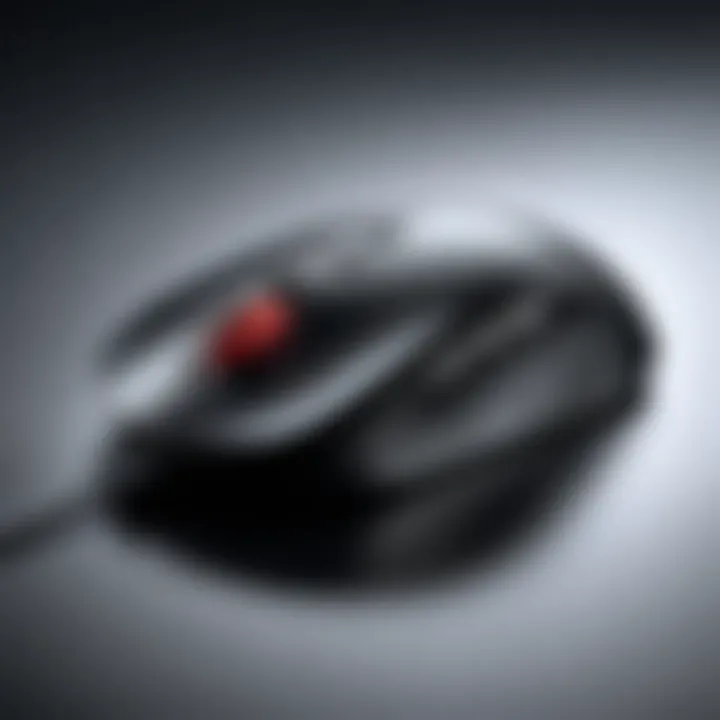
Diagnosing connection issues is a crucial next step if you encounter problems after addressing driver-related issues. This involves checking the entire pathway from your Bluetooth settings down to the physical connections, ensuring everything is seamless.
It's recommended to reassess the Bluetooth settings within Windows 10 to confirm the device is not only visible but also properly paired. Beyond that, examining environmental factors like interference from other devices can reveal reasons behind connection instability.
"Maintaining a steady connection often requires a tailored approach, considering each unique setup and potential obstacles."
By exploring a range of strategies for diagnosing connection issues, users can significantly enhance their ability to keep their Bluetooth mice working smoothly.
Maintaining Bluetooth Driver Efficiency
Keeping your Bluetooth mouse drivers in tip-top shape is paramount for a smooth computing experience on Windows 10. A well-maintained driver not only ensures better performance but also opens the door to new features and enhanced compatibility with various devices. When you think about it, even the best hardware can fall flat without the right software behind it.
Taking the time to maintain these drivers serves multiple purposes. First off, it can significantly prolong the lifespan of both the device and the driver itself. Regular updates and checks can help avoid compatibility issues that arise as new software updates roll out. Consequently, this is not merely about keeping things working; it’s about ensuring they work efficiently and reliably.
Updating Drivers
Updating drivers is akin to giving your Bluetooth mouse a periodic health check. It can resolve bugs, enhance performance, and improve support for other devices.
Manual Update Procedures
Performing updates manually is like reading a recipe before you start cooking. You control the process entirely, ensuring you only add trusted ingredients. This method involves checking the manufacturer's website for the latest driver version specifically designed for your Bluetooth mouse.
A key characteristic of manual updates is that the user has complete awareness of what’s being installed. This is particularly beneficial since it allows you to avoid unwanted bloatware or unnecessary applications that can slow down your system. The unique feature here is the kind of control it offers.
However, it does require time and effort to consistently check back for updates. Depending on the user's tech-savviness, this approach can either empower or overwhelm.
Using Driver Update Software
On the flip side, utilizing driver update software is like setting your oven to auto-bake. It automates the process and ensures you’re always running the latest versions without manual checks.
Such software streamlines the entire update experience. A notable advantage is the convenience it offers; one click could do the job of hunting down multiple elusive drivers.
Nevertheless, this method isn’t without drawbacks. Users may end up placing their trust in third-party applications that could either miss critical updates or, worse yet, install unwanted software. It's a trade-off between convenience and control.
Uninstalling and Reinstalling Drivers
At times, you may find that reinstalling a driver is necessary to resolve a stubborn issue. Whether it’s due to a previous update causing problems or just a need for a fresh start, uninstalling and reinstalling can often work wonders.
The process involves navigating to the Device Manager, locating your Bluetooth mouse, and selecting the option to uninstall. After that, restarting your computer prompts Windows to automatically reinstall the driver, or you can opt for a manual installation if needed. What’s significant about this method is that it provides a clean slate and can resolve many software-related issues that accumulate over time.
"Having a well-maintained driver isn't just to keep things ticking; it's to enrich your entire user experience, and why not make it as seamless as possible?"
Ultimately, maintaining Bluetooth driver efficiency is about knowing when to act. Whether you choose to manually update, lean on software, or reinstall, each choice carries its weight in enhancing your Windows 10 experience.
Examining Compatibility with Windows
In the realm of technology, ensuring compatibility between devices and operating systems is paramount. For Bluetooth mice, assessing their compatibility with Windows 10 not only determines functionality but also enhances the user experience significantly. This section aims to shed light on how compatibility directly affects performance, stability, and user satisfaction while using Bluetooth mice.
Supported Bluetooth Profiles
To make sense of Bluetooth mice compatibility, it’s crucial to understand the various Bluetooth profiles. A Bluetooth profile is essentially a standardized specification that defines the capabilities and features of Bluetooth-enabled devices. Each profile governs how devices communicate and interact with one another. For example, the HID (Human Interface Device) profile is key for mice, as it allows for seamless interaction between your mouse and computer.
Some other notable profiles that play a role in compatibility include:
- A2DP (Advanced Audio Distribution Profile): Primarily for audio devices, not mice.
- AVRCP (Audio/Video Remote Control Profile): Used for controlling audio devices.
- SYNCH (Synchronization Profile): Used for syncing data between devices.
In the context of Bluetooth mice, sticking to the HID profile ensures that the mouse can fulfill its intended functions without hiccups. Any discrepancies in support, such as older profiles or various Bluetooth versions, might cause lag or even disconnection issues.
List of Compatible Mice
When selecting a Bluetooth mouse for your Windows 10 system, it’s not just about brand names; it’s important to consider specific models that truly enhance the experience. Here’s a diverse list showcasing a mix of popular options:
- Logitech MX Master 3: This mouse offers advanced features and customizable buttons, catering to tech enthusiasts and professionals alike.
- Microsoft Surface Mouse: Known for its sleek design, it integrates seamlessly with Windows 10.
- Razer Pro Click: This is a premium choice for gamers who also want to use the mouse in a work environment.
- Anker Wireless Vertical Mouse: Targets ergonomic support, making long hours at the computer less taxing on the wrist.
"Choosing the right mouse can make the difference between a frustrating work session and a seamless experience. Compatibility widens your choices, allowing for features that suit your individual preferences."
Analyzing Common Errors and Solutions
Analyzing common errors and their solutions is a crucial aspect of maintaining a seamless user experience with Bluetooth mouse drivers on Windows 10. Many people overlook the significance of drivers, viewing them simply as background processes. However, these drivers directly influence how well a mouse performs, affecting accuracy and responsiveness, which are critical for tasks ranging from basic navigation to intricate design work. By identifying typical issues and understanding the corresponding remedies, users can improve their device's functionality and overall satisfaction.
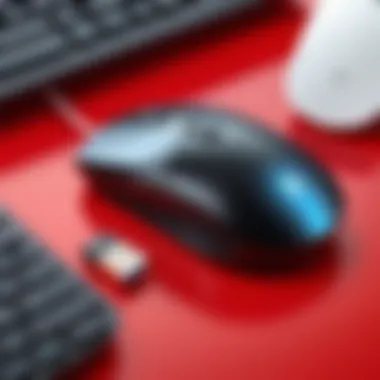
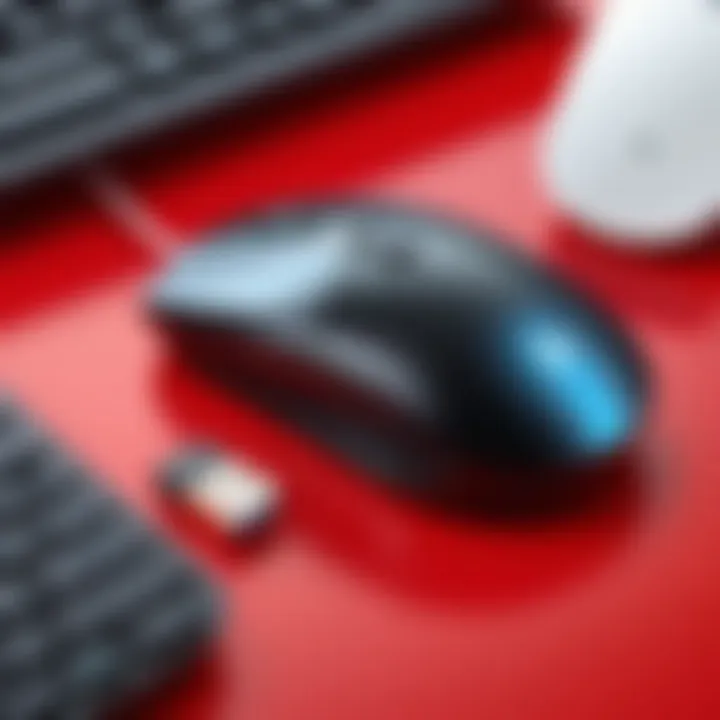
Connection Errors
Connection errors are among the most frequent problems encountered by Bluetooth mice users. These issues can manifest in various ways, such as failed connections, mouse not being recognized, or intermittent disconnections during use. It often baffles users when their devices seem to work one moment and fail the next.
Here are some common causes of connection errors:
- Bluetooth is turned off: It sounds simple, but sometimes users simply forget to check if Bluetooth is enabled on their device. Making sure this setting is in the right place can save a lot of time and frustration.
- Outdated drivers: If the Bluetooth driver is outdated or corrupt, it might not communicate properly with the mouse. Regularly checking for driver updates on manufacturer's websites or through Windows Update can resolve this issue.
- Interference from other devices: Bluetooth operates on the 2.4 GHz frequency, which can be crowded with other devices like Wi-Fi routers or microwaves. If there are many active devices, it might cause interference, leading to connection drops.
Resolving connection errors usually involves a few steps:
- Restart Bluetooth: Toggle Bluetooth off and on again.
- Re-pair the device: Remove the mouse from the list of Bluetooth devices and try pairing it again.
- Update drivers: Ensure the Bluetooth drivers are up to date.
- Reduce interference: Move away from potential sources of interference.
"Most connection issues can be solved by a simple reset or update, yet many users forget about these fundamental steps."
Intermittent Performance Issues
Intermittent performance issues can drive a user up the wall. Imagine trying to draw a straight line, only for the cursor to hop around unpredictably. Such behavior can detract from productivity and make using the mouse maddening.
What could be behind these glitches? Here are potential culprits:
- Battery issues: Wireless mice rely on batteries, and if they're low, performance can suffer. Users should routinely check battery levels and replace them as necessary.
- Driver malfunctions: Just as with connection errors, a malfunctioning driver might lead to sporadic performance.
- Software conflicts: Sometimes, other software running on the computer can conflict with the mouse driver, leading to erratic behavior. Closing unnecessary applications can improve stability.
To tackle intermittent performance, users should consider the following remedies:
- Check battery: Replace or recharge batteries as needed.
- Restart the device: A device reboot can clear up numerous glitches.
- Update or reinstall drivers: Make sure the latest version is installed or reinstall the driver altogether.
- Limit resource-intensive apps: Close any unnecessary applications to reduce the load on the system.
By understanding these common errors and their solutions, users can enhance their experience with Bluetooth mice, resulting in smoother navigation and productivity. It's all about knowing the pitfalls and taking proactive steps to avoid them.
Best Practices for Bluetooth Mouse Usage
When it comes to maximizing the efficiency of a Bluetooth mouse, it’s essential to implement best practices tailored for consistency and performance. Adaptations in how a user interacts with the device can yield considerable benefits. From ensuring uninterrupted connectivity to extending the battery life, these practices are worth their weight in gold for both casual users and tech aficionados alike.
Reducing Signal Interference
Signal interference is a common gremlin in the world of Bluetooth devices. A Bluetooth mouse relies on a stable signal to function seamlessly, and several factors can create noise or disruptions. By adhering to strategies aimed at minimizing these disturbances, a user can experience smoother interactions and reduced frustration.
- Keep the mouse within range: Bluetooth typically operates effectively within a range of about 30 feet. Beyond this, the signal weakens, leading to erratic performance. Try to stay within this distance from the paired device, or simply be aware of your surroundings.
- Avoid physical obstructions: Walls, metal objects, and electronic devices can disrupt the mouse's signal. Position your computing setup strategically to minimize these barriers.
- Limit competing wireless signals: Numerous devices—the Wi-Fi router, microwaves, and other Bluetooth gadgets—can contribute to interference. If your workspace is crowded with wireless technology, taake some time to organize your devices, maybe even close by any wireless printers or routers during important tasks.
- Switch to a less populated channel: If your Bluetooth connection is continuously dropping, consider changing the channel on your router to lessen traffic. This adjustment could mean a significant boost in device reliability.
- Use a USB hub: If compatible, consider using a USB hub designed for Bluetooth devices. This method allows for more effective signal handling and can prevent some of those dropouts—especially in busy environments.
Being mindful of these aspects can ensure that a user’s experience remains fluid and devoid of those pesky interruptions that can spoil a good workflow.
Power Management Tips
Power management is pivotal not just for the longevity of a Bluetooth mouse, but also for ensuring its reliability when needed. Understanding how to care for your device’s energy consumption can translate to fewer interruptions during crucial tasks.
- Check battery health regularly: Tracking the battery life of your Bluetooth mouse is essential. Most modern devices have indicators, suggesting when it's time for a recharge or battery change. Make it a habit to recharge your device overnight to start fresh every day.
- Turn off the mouse when not in use: This may seem trivial, but simply turning off the mouse when stepping away can save battery power significantly over time. If available, use the power switch conveniently located on the bottom of the mouse.
- Utilize sleep modes: Many Bluetooth mice come with energy-saving modes that automatically switch off parts of the device when inactive. If your device supports this feature, enable it through the settings on your system.
- Keep it clean: Dust and debris can affect the functionality of buttons and the sensor, leading to erratic behavior that might drain power faster. Periodically clean your mouse, ensuring smooth operations.
"A little attention to detail can lead to a lot less hassle down the line."
- Consider rechargeable options: If you’re frequently changing batteries, consider investing in rechargeable options, which not only provide savings in the long run but lessen waste.
Implementing these power management techniques can prolong the life of your device and enhance the usability, ensuring that you are never left high and dry when you need that added tech support to get through the day.
Future of Bluetooth Technology
The horizon of Bluetooth technology is expanding rapidly, and this evolution bears significant implications for how users interact with devices, particularly in the context of Bluetooth mouse drivers on Windows 10. The advent of new trends and improvements isn't just fluff; it’s a game-changer. Understanding these shifts can help early adopters and tech enthusiasts prepare for the next wave of advancements that promise to enhance connectivity and performance.
Emerging Trends
As technology gallops forward, several trends are emerging that might reshape Bluetooth as we know it. One of the most notable is the rise of Bluetooth 5.2, which boasts enhancements in speed and range. The typical Bluetooth connection, which suffers from lag or drops, can benefit immensely from this upgrade. Faster data transfer means that mouse movements translate more accurately to action on the screen, which is a boon for gamers and professionals alike.
Not only that, but Low Energy Audio is another feature capturing attention. This technology will not only improve audio experience but has implications for other peripherals too, such as Bluetooth mice with built-in speakers. Imagine a mouse that also gives you audio feedback as you hover over different items on your screen. It opens up new avenues for interaction that were previously not possible.
Furthermore, multi-device connectivity is making a mark. Users expect to manage multiple gadgets with a single peripheral. A Bluetooth mouse that can easily switch between multiple paired devices, say a laptop and a tablet, makes workflows smoother. You are not tethered to just one machine, enhancing efficiency, especially for those who frequently switch between devices for work or leisure.
Expected Improvements in Driver Technology
As Bluetooth technology evolves, so too must the drivers that support it. Future improvements in Bluetooth mouse drivers promise to offer not only enhanced stability but a richer, more intuitive user experience.
One expected enhancement is the automatic updates feature for drivers. Imagine if your system could automatically optimize the drivers based on usage patterns or connection history. This level of smart management could eliminate connectivity issues before they manifest, giving users a seamless experience without the headache of manual troubleshooting.
Additionally, intelligent power management is on the horizon. As more devices move toward energy efficiency, future Bluetooth drivers may incorporate features like adaptive power usage that adjusts based on how you're using your mouse. For example, if your mouse is stationary, the driver could cut back on power consumption— this becomes crucial for longer battery life.
In summary, the future of Bluetooth technology is bright and promising, with several trends and improvements poised to transform the user experience. As drivers become more sophisticated, they are likely to bridge the gap between hardware capabilities and user expectations, leading to interactions that feel more fluid and intuitive.
The continuous development of Bluetooth technology and drivers not only enhances connectivity but also opens doors for entirely new ways of interacting with devices.
Keeping an eye on these advancements will ensure that users of Windows 10 are not just using their Bluetooth mice but are leveraging them to their fullest potential.



